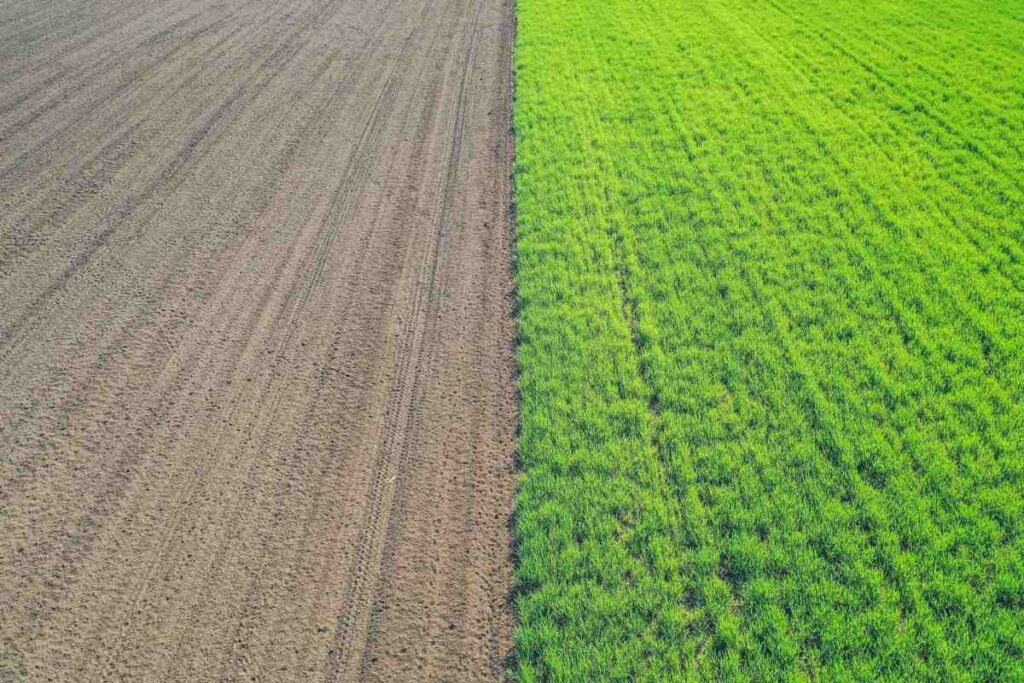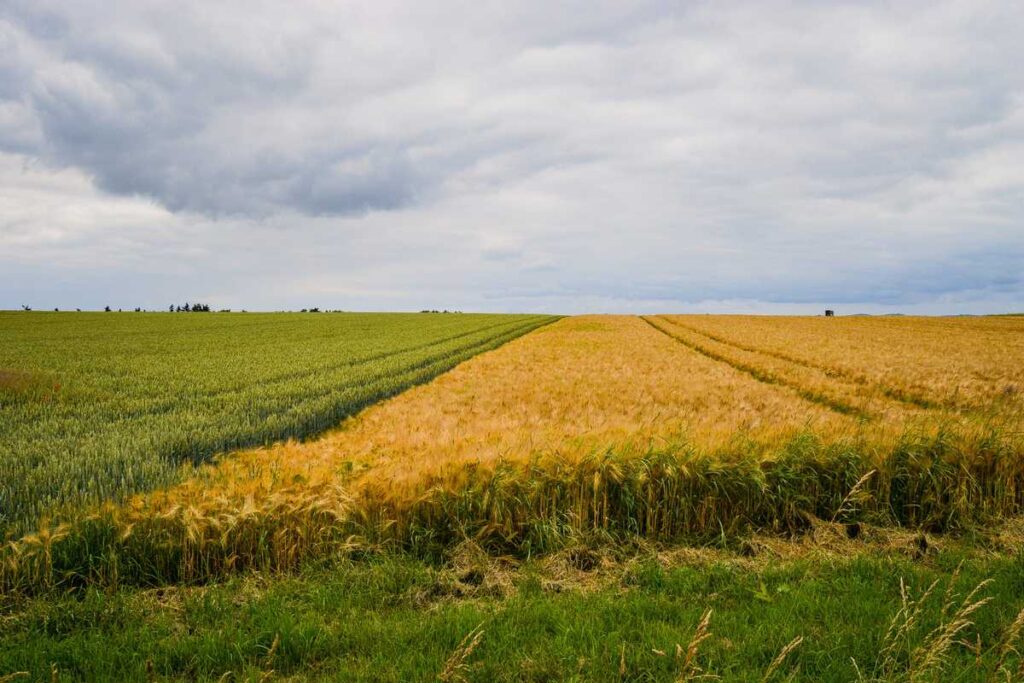Mixed cropping is an agricultural technique that involves cultivating two or more crops at the same time on a single plot of land. This strategy optimizes the utilization of resources such as sunlight, water, and nutrients, while also mitigating the risk of crop loss from pests or diseases. By selecting crops with varying growth habits and nutrient requirements, farmers can enhance soil health and promote biodiversity, leading to a more robust agricultural system. Typically, this method pairs a primary crop with a secondary crop that supports its growth, such as planting maize in conjunction with beans. This practice not only boosts the overall yield per area but also offers farmers a diverse range of products, thereby enhancing food security and fostering economic resilience.
While mixed cropping offers many advantages, it also has certain disadvantages that can create difficulties for farmers. Those contemplating mixed cropping should carefully evaluate these potential downsides in relation to the advantages. It may be necessary for them to modify their practices and invest in further knowledge or resources to ensure the system operates efficiently. In this article, we will discuss in detail the advantages and disadvantages of mixed cropping in agriculture.
Table of Contents
Advantages of Mixed Cropping in Agriculture

1. Risk Reduction
One of the main benefits of mixed cropping is the reduced risk of crop failure. By growing multiple crops together, farmers spread out the risk; if one crop is affected by a pest, disease, or adverse weather, the other crops may still thrive, securing at least a partial yield. This stability is particularly beneficial for small-scale farmers who rely heavily on annual harvests for their income and food supply.
2. Efficient Resource Use
Mixed cropping allows for better utilization of sunlight, water, and nutrients. Different crops have different root depths, growth rates, and nutrient needs, which means they can occupy various ecological niches within the same field. For example, shallow-rooted crops like beans can grow alongside deep-rooted crops like maize without intense competition. This complementary growth helps prevent the overuse of certain soil layers and encourages more balanced nutrient uptake.
3. Enhanced Soil Fertility
Some crops, especially legumes like peas and beans, have the unique ability to fix atmospheric nitrogen in the soil through symbiosis with nitrogen-fixing bacteria. When grown alongside non-leguminous crops, legumes can increase nitrogen availability in the soil, reducing the need for synthetic fertilizers. This natural fertilization enhances soil fertility and supports healthier crop growth in future planting seasons.
4. Improved Pest and Disease Management
Mixed cropping creates a more diverse environment that can naturally deter pests and limit the spread of diseases. Many pests are crop-specific, meaning they target only a single type of plant. By growing multiple types of crops, farmers can break pest cycles and reduce infestations. Additionally, certain plants may act as natural repellents, shielding other crops from pests. For instance, planting garlic or onions with other crops can help repel insects due to their strong scents.
5. Erosion Control and Improved Soil Structure
Different crops with varying root systems help hold soil in place, reducing erosion, especially on sloped lands. A mixture of deep and shallow roots can bind the soil more effectively, protecting it from being washed away by rain or blown by the wind. This leads to better soil structure over time, allowing for improved water retention and aeration, which are essential for healthy plant growth.
6. Economic Benefits and Higher Yields
Mixed cropping can increase overall yields per unit area. By growing crops with staggered harvest times, farmers can optimize the productivity of their land throughout the growing season. Furthermore, the diversity in crops provides multiple sources of income, reducing financial dependency on a single crop and helping farmers better manage market fluctuations. This can be particularly advantageous when prices drop for one crop, as income from other crops can help offset the losses.
7. Biodiversity and Environmental Benefits
Mixed cropping encourages biodiversity within farmland, supporting a variety of beneficial organisms like pollinators and soil microbes. This natural biodiversity enhances the farm’s ecosystem health, making it more resilient to external stresses such as climate change and pest outbreaks. Biodiverse systems are also better at conserving soil and water resources, making mixed cropping an environmentally sustainable choice.
Disadvantages of Mixed Cropping in Agriculture

1. Complex Management
Mixed cropping requires more complex planning and management than monoculture farming. Farmers must carefully select crops that complement each other in terms of growth habits, nutrient requirements, and harvest times. For instance, pairing plants with incompatible root systems or growth rates can lead to competition rather than cooperation, reducing overall yields. This requires considerable knowledge of crop biology, which may be challenging for farmers without access to training or resources.
2. Potential Competition Between Crops
If crops are not carefully chosen, they may compete for resources such as water, nutrients, and sunlight. For instance, if one crop grows much faster than the other, it may overshadow the slower-growing plant, limiting its access to sunlight. This competition can lead to reduced yields or even the failure of one of the crops. Balancing the needs of different plants requires in-depth knowledge and experience, which might not be available to all farmers.
3. Complicated Pest and Disease Management
While mixed cropping can help deter certain pests and diseases, it can also create conditions where new pests and diseases emerge, affecting both crops. Additionally, pest and disease management can be more complicated because each crop might require different treatments, which can be time-consuming and costly. Applying pesticides or other treatments to one crop without harming the other may require specialized knowledge and methods, which might be challenging to implement effectively.
4. Variable Harvesting Times
Mixed cropping often involves crops with different maturation rates, which means that harvesting must be done in stages rather than all at once. This staggered harvest requires more labor and careful timing to ensure each crop is picked at its optimal stage. In regions where labor is costly or limited, this can increase production costs and complexity. It may also be challenging to keep up with staggered harvests if multiple crops mature at close intervals.
5. Lower Yields for Certain Crop Combinations
Although mixed cropping can increase overall productivity, it may sometimes result in lower yields for individual crops, especially if they compete for the same resources. For example, growing maize and wheat together could reduce yields for both if their nutrient and sunlight requirements are too similar. Farmers may not achieve the high yields that could be possible with a well-managed monoculture system, particularly if their goal is to maximize output for one specific crop.
6. Increased Labor Requirements
Mixed cropping can be labor-intensive, as it requires more attention to planting, tending, and harvesting. Tasks like weeding, pest control, and fertilizing may need to be done separately for each crop, requiring additional effort. In areas with high labor costs or labor shortages, this added work can make mixed cropping less economically viable compared to monocropping. The extra labor involved in mixed cropping might also deter large-scale farms from adopting this practice.
7. Difficulty in Standardizing Agricultural Practices
With mixed cropping, it can be harder to standardize practices like irrigation, fertilization, and pest control, as each crop may have unique requirements. This lack of standardization can make it challenging to implement efficient, large-scale agricultural practices, especially in commercial farming. In contrast, monoculture farms benefit from the ability to apply the same treatment across the entire field, which can save time, resources, and labor.
Conclusion
In conclusion, mixed cropping in agriculture offers a combination of considerable benefits and significant challenges. It enhances resource efficiency, improves soil fertility, increases pest resistance, and supports environmental sustainability, making it an attractive strategy for small-scale and resource-constrained farmers looking to diversify their production and mitigate risks. However, the practice also requires careful management, crop selection, and often more labor and expertise than traditional monoculture systems. The added complexity, higher labor costs, and the risk of crop competition or market constraints may impede its implementation, particularly on larger, mechanized farms. Ultimately, while mixed cropping can be a viable and sustainable option, its effectiveness is heavily influenced by the specific circumstances of the farm, the farmer’s skill set, and the compatibility with market needs. By carefully evaluating these advantages and disadvantages, farmers can determine whether mixed cropping aligns with their goals, resources, and farming environment.







